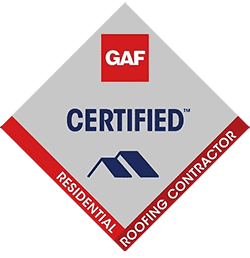5 Factors That Influence Roof Repair Costs!
Understanding the factors that influence the cost of roof repairs can help homeowners in Beaumont and Port Arthur, Texas, make informed decisions.
Whether a minor leak or major storm damage, roofing repair costs can vary significantly based on several key factors.
Knowing what to expect can help you budget accordingly and avoid unpleasant surprises when it comes time to call in a roof company to handle any discovered damage.
Here are five crucial factors that affect roof repair costs.
1. Extent of the Damage
The most obvious factor influencing roofing repair costs is the extent of the damage.
Minor issues like a few missing shingles or small leaks will naturally cost less to repair than significant structural damage caused by storms, water infiltration, or age-related wear and tear.
The larger the area of your roof that needs repair, the higher the overall cost.
For example, if your roof has experienced water damage and caused mold growth, the repair process becomes more complicated and costly, as the affected areas need to be treated for mold and the underlying structural issues addressed.
On the other hand, repairing a few loose shingles or fixing minor leaks can often be done quickly and affordably.
2. Roofing Materials
The materials used in your roof will also play a role in the cost of repairs.
Different roofing materials require different techniques and materials for repair.
For instance, asphalt shingles are relatively easy and inexpensive to repair, while materials like slate, metal, or tile may require specialized skills and higher material costs.
In Beaumont and Port Arthur, where traditional asphalt shingles and more premium materials like clay or metal roofs are common, the cost of materials must be factored in when planning repairs.
For example, repairing a metal roof may require replacement panels that are more expensive than asphalt shingles.
You will also need a roofer who is experienced explicitly with these materials, which could increase labor costs.
3. Roof Pitch and Accessibility
The pitch (slope) of your roof and its overall accessibility are critical factors that affect roofing repair costs.
Steeper roofs require more safety precautions, specialized equipment, and skilled labor to repair, all of which increase the overall cost.
Likewise, a roof that is hard to access, either because of its height or because of obstructions like trees or other structures, may also require extra effort, time, and equipment to complete the job.
For example, repairing a steep, multi-level roof might require scaffolding or a harness system to ensure the workers' safety, which adds to the expense.
Conversely, repairing a low-pitched roof with easy access may be much more straightforward and, therefore, more affordable.
4. Labor Costs and Roofing Contractor Experience
Labor costs can vary based on the roofer's experience, the region, and the complexity of the repair.
In areas like Beaumont and Port Arthur, roofing contractors with experience in the local climate conditions—such as high humidity, intense heat, or the possibility of hurricanes—may charge a premium for their expertise.
Skilled roofer repair services are often worth the extra cost, as they can provide quality repairs that ensure the longevity of your roof.
Roofing companies also vary in pricing based on their reputation and how quickly they can perform the work.
Some contractors offer affordable rates but may take longer or use lower-quality materials, which can cost you more in the long run.
When seeking roof companies for repairs, it is essential to weigh the cost against the experience level and the quality of materials they provide.
5. Timing and Emergency Repairs
The timing of your roof repair services can significantly impact costs.
Repairs may be relatively inexpensive and less complicated if roof damage is addressed early.
However, the damage may worsen if you delay repairs, requiring a more extensive and costly repair job.
In some cases, such as after a severe storm or hurricane, the demand for roofing services can drive up prices due to increased competition for contractors.
Emergency roofing repairs often come with a premium because of the urgent nature of the job.
If you need immediate attention to prevent further damage to your home, be prepared for higher costs.
Roof companies may charge extra for after-hours or weekend service and for expedited material delivery.
Tips for Reducing Roofing Repair Costs
While some factors are out of your control, there are several ways to reduce roofing repair costs:
Conclusion
Understanding the factors that influence roofing repair costs can help homeowners in Beaumont and Port Arthur better manage their roofing expenses.
Consider the extent of the damage, the type of roofing materials, the roof pitch, labor costs, and timing to make more informed decisions about repairs.
Remember that regular maintenance and early detection of roof issues can significantly reduce the overall cost of repairs.
With careful planning and a trusted roofing contractor, you can ensure your roof remains in top condition without breaking the bank.
Key Takeaways
FAQs
1. What is the average cost of a roof repair?
2. How can I tell if my roof needs repairs?
3. How long do roof repairs take?
4. Are roof repairs covered by insurance?
5. How can I reduce roofing repair costs?
6. What's the difference between roof repair and roof replacement?
7. How do I choose a good roofer?
8. Does the type of roof affect repair costs?
9. How do I know if I need emergency roof repair services?
10. Can I repair my roof myself?
- Schedule Regular Inspections: Regular roof inspections can help identify small issues before they become major problems. Catching leaks or damage early can save you money on larger, more costly repairs down the line.
- Choose an Experienced Contractor: While it may be tempting to choose the cheapest option, it's often worth investing in an experienced roofer who can complete the repair correctly the first time, saving you money in future repairs.
- Consider Preventative Maintenance: Regular roof maintenance, such as cleaning gutters and trimming overhanging trees, can prevent damage and extend the lifespan of your roof. This proactive approach can reduce the need for costly repairs later on.
- Get Multiple Estimates: Before hiring a contractor, get multiple quotes to compare pricing and ensure a fair deal. Don't just go for the lowest price—consider the roofing company's reputation and experience as well.
- Extent of Damage: The more severe the damage to your roof, the higher the repair costs may be. Early detection of minor issues can save you money in the long run.
- Roofing Materials Matter: Different roofing materials have varying repair costs. Asphalt shingles are generally less expensive to repair compared to metal or tile roofs.
- Roof Pitch and Accessibility: Steeper or hard-to-access roofs require more labor and equipment, increasing repair costs. A flat, easy-to-reach roof tends to be more affordable.
- Labor Costs: Experienced contractors may charge more, but their expertise ensures quality repairs that can extend the life of your roof, potentially saving you money over time.
- Timing: Delaying repairs or requiring emergency services can drive up costs. Regular roof inspections and proactive maintenance help prevent major damage.
- Roof repair costs vary widely depending on the extent of the damage, roofing material, and location. Minor repairs may cost as little as $150–$400, while major repairs can range from $1,000 to $4,000 or more.
- Signs of roof damage include missing or curling shingles, water stains on ceilings, leaks, sagging areas, and visible wear and tear. Regular inspections can help spot issues early.
- The timeline for roof repairs depends on the extent of the damage. Small repairs may take just a few hours, while larger jobs, especially if the roof requires more extensive work, could take one to several days.
- Roof repairs may be covered by homeowners insurance if damage is caused by a covered event, such as a storm, hail, or fire. Be sure to check your policy for specific coverage details.
- Regular roof inspections, preventive maintenance, and early repairs can help reduce long-term repair costs. Additionally, getting multiple estimates and choosing a reputable roofer can help you save money.
- Roof repairs address specific issues, such as leaks or damaged shingles, while roof replacement involves removing and installing a completely new roof. Roof replacement is typically more expensive than repairs.
- Look for roof companies with experience, a solid reputation, proper licensing, and insurance. Ask for references, read online reviews, and get at least three estimates before deciding.
- Yes, different roofing materials can affect repair costs. Asphalt shingles are relatively inexpensive to repair, while more complex materials like slate, tile, or metal can be more costly due to the specialized labor and materials required.
- If you experience significant damage from a storm, notice large leaks, or see visible sagging or structural issues, it may be time to call for emergency roof repair services. Quick action can prevent further damage.
- While minor issues like replacing a few shingles may be manageable for DIYers, most roof repairs are best left to professionals. Roofing can be dangerous, and improper repairs could lead to more damage or void your insurance.
Tags
Subscribe to High & Tight Roofing's Blog



Comments